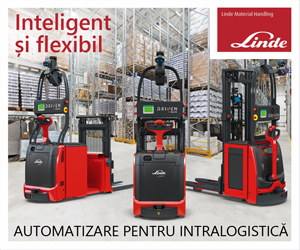The new WOLFF 133 B completes the WOLFF luffing crane range in the lower load moment range

Related Articles
Due to their compactness, small luffing jib cranes are particularly in demand on cramped city construction sites. Wolffkran has satisfied this demand for many years with the popular WOLFF 100 B. Just in time for Bauma 2019, the crane manufacturer from Heilbronn will showcase its successor, the new WOLFF 133 B. Fitted with a hydraulic luffing system and the latest crane technology, the WOLFF 133 B is to continue the success story of its predecessor in the 125 tm class.
 Wolffkran opted for a design with hydraulic luffing system for the WOLFF 133 B, which proved to be successful in the next larger model, the WOLFF 166 B. The hydraulic luffing system allows for an even smaller out-of-service position than the conventional luffing system with rope, which is particularly important on narrow city construction sites. In addition, it offers the advantage of faster installation, since no luffing rope has to be reeved.
Wolffkran opted for a design with hydraulic luffing system for the WOLFF 133 B, which proved to be successful in the next larger model, the WOLFF 166 B. The hydraulic luffing system allows for an even smaller out-of-service position than the conventional luffing system with rope, which is particularly important on narrow city construction sites. In addition, it offers the advantage of faster installation, since no luffing rope has to be reeved.
Flexible solutions for every requirement
In order to offer the customer even greater flexibility, Wolffkran has designed two versions of its new smallest luffing jib crane. One is the WOLFF 133.6 B with a maximum lifting capacity of 6.2 tons and a tip load capacity of 2.6 tons with a maximum jib radius of 45 meters. The other is the WOLFF 133.8 B 8-ton version with a tip load capacity of 2.3 tons for customers who want a higher maximum lifting capacity. Just like the larger WOLFF 166 B, the WOLFF 133 B can also be operated in the single or 2-fall mode. In addition, both versions offer the option of having a single-fall hook block, which makes it possible to increase the peak load capacity by a further 250 kg. The WOLFF 133 B is fitted with a 25-meter basic jib that can be extended in 5-meter increments up to a maximum length of 45 meters. Thanks to the modular WOLFF tower system, the WOLFF 133 B can be built up to a freestanding tower height of 95 meters.
As of June 2019, the WOLFF 133 B will be supplied with the 2 x 2-meter tower section UV 20. (2.0 m × 2.0 m). A version of the crane with a connection to a 1.5 x 1.5-meter tower section is in development.
Proven hoist winches
The WOLFF 133.6 B demonstrates just how efficient it is with the proven 28 kW hoist winch Hw 628.1 FU, which is also integrated in other models including the flat top clear range and permits above-average operating speeds with partial load speeds of up to 108 m/min. For the 8-ton model, Wolffkran uses the proven hoist winch of the WOLFF 166 B with the lighter 45 kW electric motor Hw 845 FU, which helps it reach max. partial load speeds of 158 m/min. The use of hoist winches integrated into other WOLFF crane models makes the maintenance, replacement and inventory stock more efficient.
 Optimized operation and transport
Optimized operation and transport
Both the hydraulic cylinder and the hydraulic unit are installed in the connecting block as a compact unit. Thanks to this design, the customer saves on both time and money since the hydraulic lines do not need to be disconnected for the transport and assembly. Completely in keeping with optimizing transportation, the engineers at Wolffkran designed the one-piece counter-jib with the patented WOLFF counterweight fixation for the four 5.2-ton counterweights. In addition, the counterweight stones are the same size as those used in the WOLFF 166 B, which makes warehousing more efficient and reduces the risk of confusion in the crane yard. Thanks to the container-compatible design of the crane components, the WOLFF 133 B is also convincing in terms of logistics. The weight of individual components can be reduced to 6.7 tons so that if need be, smaller mobile cranes can be used for assembling and/or dismantling.
Increased efficiency and safety
The platform for the driver’s cab with switch cabinet and the WOLFF CAB crane cabin is pre-assembled ex-works as a single unit and can be attached to the crane in just one step. Furthermore, access to the hydraulic unit and the hoist winch platform on the WOLFF 133 B has been optimized so that these components can be accessed with greater ease and safety – for example, when they need to be serviced. Moreover, the WOLFF 133 B has the following features integrated as standard, thereby making the work on site safer and more efficient: the remote data transmission system WOLFF Link, an anti-collision interface, a working range limitation, an electrical central lubrication of the slewing ring, a temperature-controlled switch cabinet with heating and ventilation and a slip ring system in the lower part of the tower top for an optimum signal transmission.







